Abstract
1. In micro-electrode recordings from the human peroneal and tibial nerves, the responses of thirty-two primary spindle endings, thirteen secondary spindle endings and three Golgi tendon organs were studied during vibration of the tendons of the receptor-bearing muscles in the leg. The amplitude of the applied vibration was 1-5 mm and the frequency was varied from 20 to 220 Hz. As checked with e.m.g. and torque measurements, the muscles of the leg were relaxed during the sequences analysed. 2. Providing that the vibrator was accurately applied, all endings responded with discharges phase-locked to the vibration cycles, the discharge rates being at the vibration frequency or at subharmonics of that frequency. The response to vibration was of abrupt onset and offset, was maintained for the duration of vibration, and was not subject to fluctuation with changes in attention or with remote muscle contraction. 3. The maximal discharge rate that could be achieved varied from one ending to the next, and increased with the length of the receptor-bearing muscle. For endings driven at their maximal rate an increase in vibration frequency produced a decrease in discharge rates as the ending changed to a subharmonic pattern of response. The converse occurred on decreasing vibration frequency. 4. For any given muscle length, primary endings could generally be driven to higher rates than secondary endings but there was a wide range of responsiveness within each group and a significant overlap between the groups. At medium muscle length, the most responsive primary endings could be driven up to 220 Hz but secondary endings did not reach discharge rates higher than 100 Hz. 5. With combined vibration and passive movements, primary endings exhibited maximal vibration responsiveness during the stretching phases, sometimes firing twice per vibration cycle. During the shortening phases, however, they usually ceased responding to the vibratory stimulus. The vibration responsiveness of secondary endings was not potentiated to the same extent by on-going muscle stretch or reduced to the same extent by on-going muscle shortening. Thus, during shortening, secondary endings may be more responsive than primary endings. 6. The responses of primary endings to tendon taps were reduced during muscle vibration, a reduction which probably contributes to vibration-induced suppression of tendon jerks. Additionally, as the muscle shortened after tendon percussion, there was a transient pause in the response to vibration.
Full text
PDF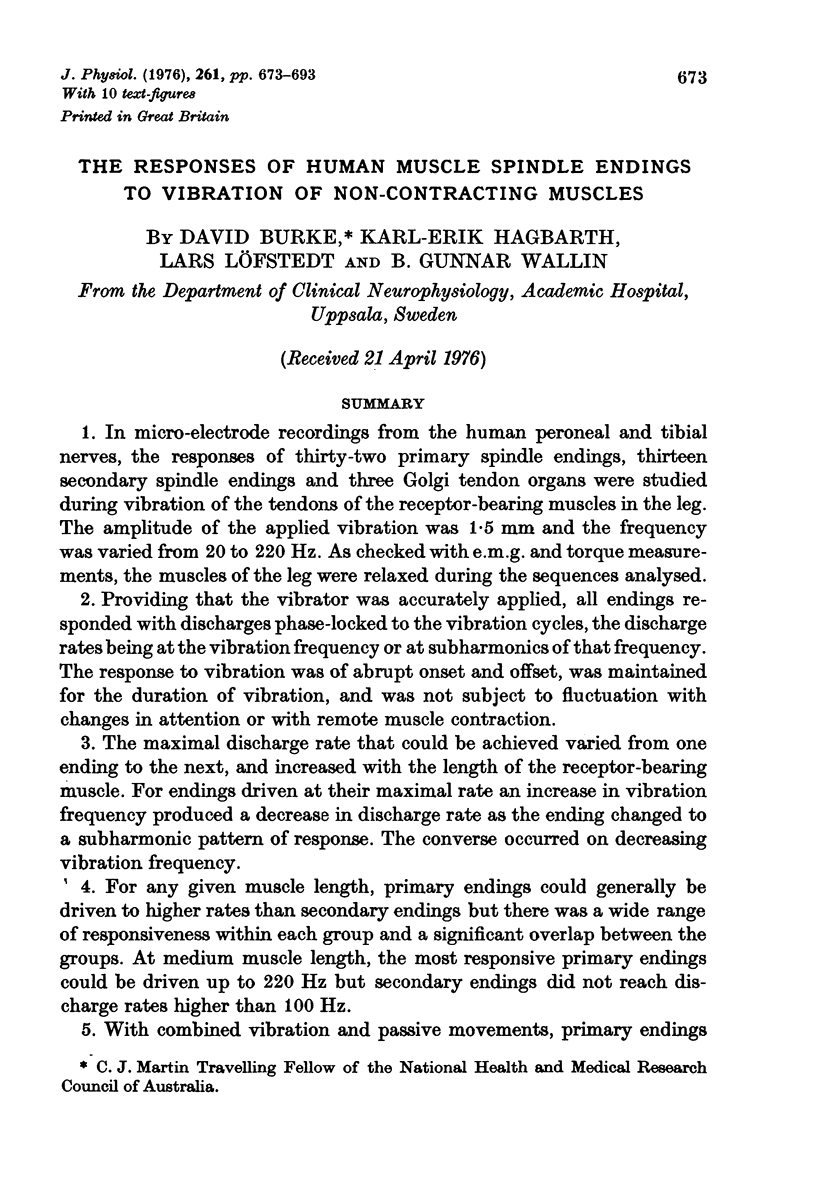
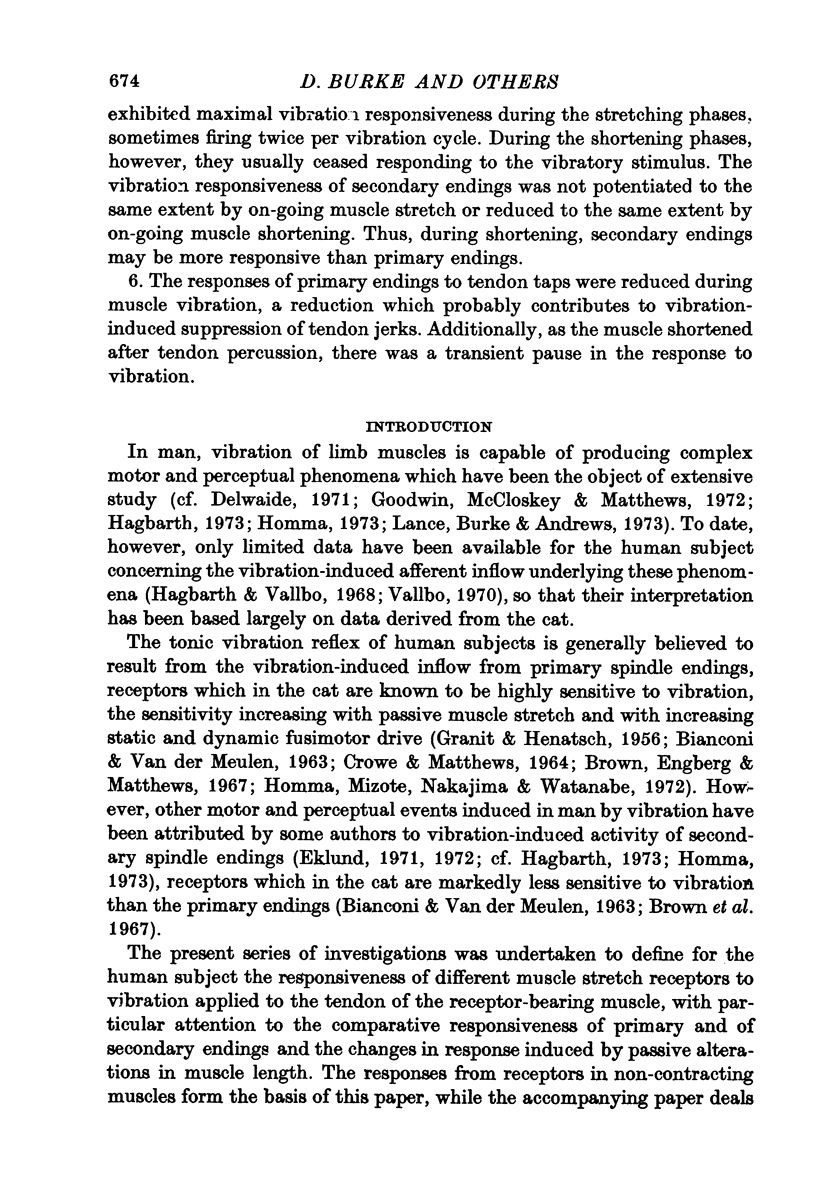
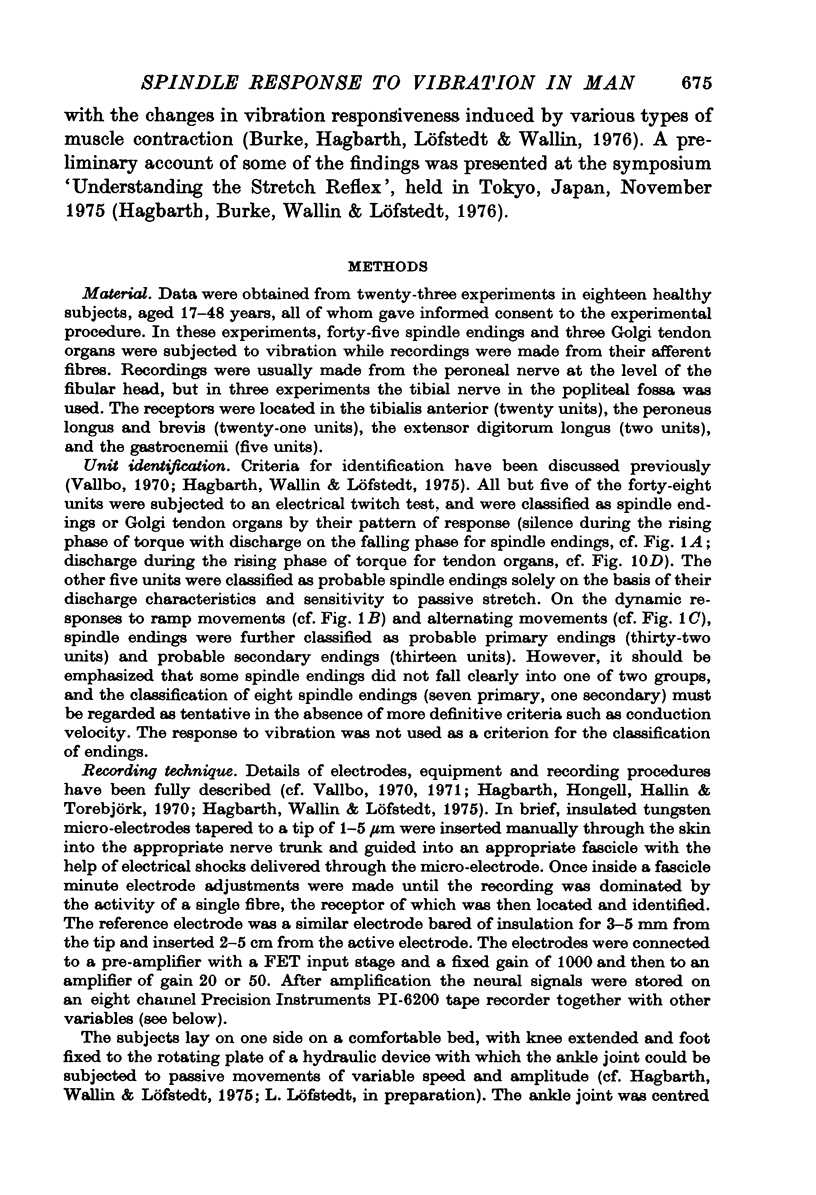

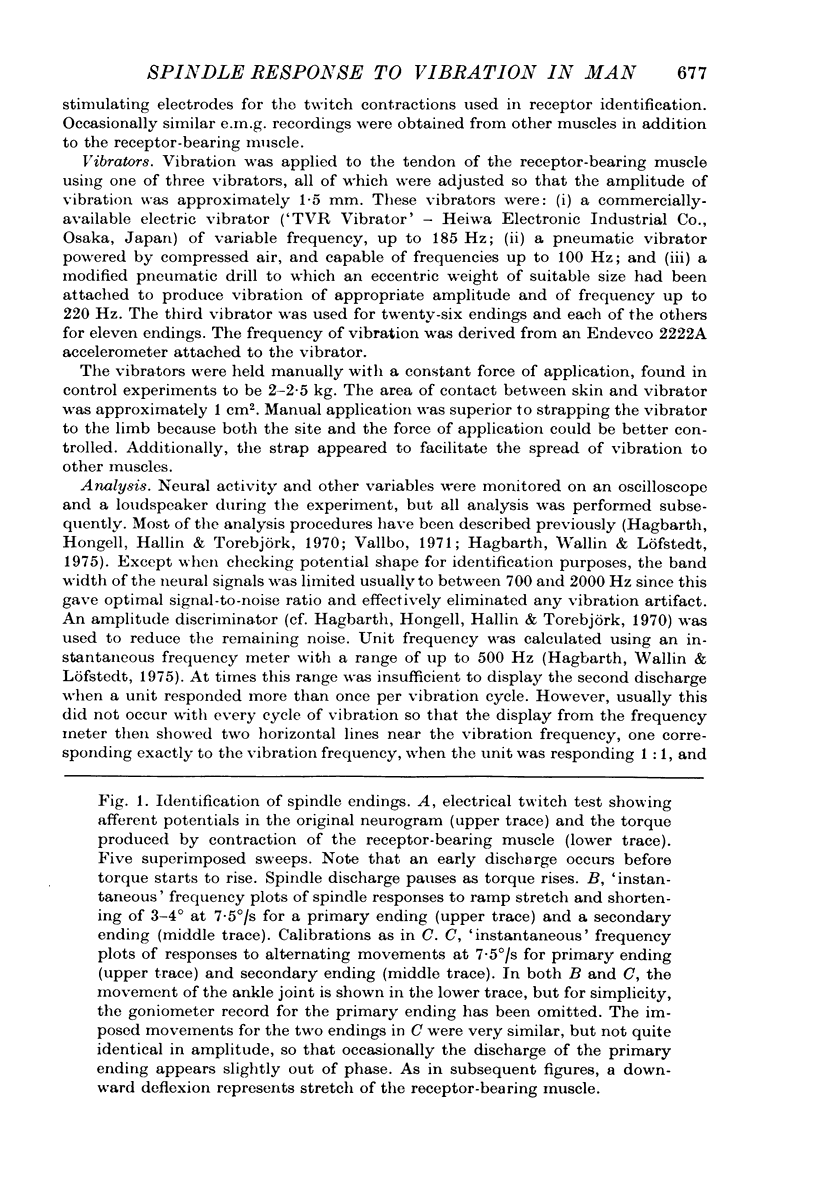
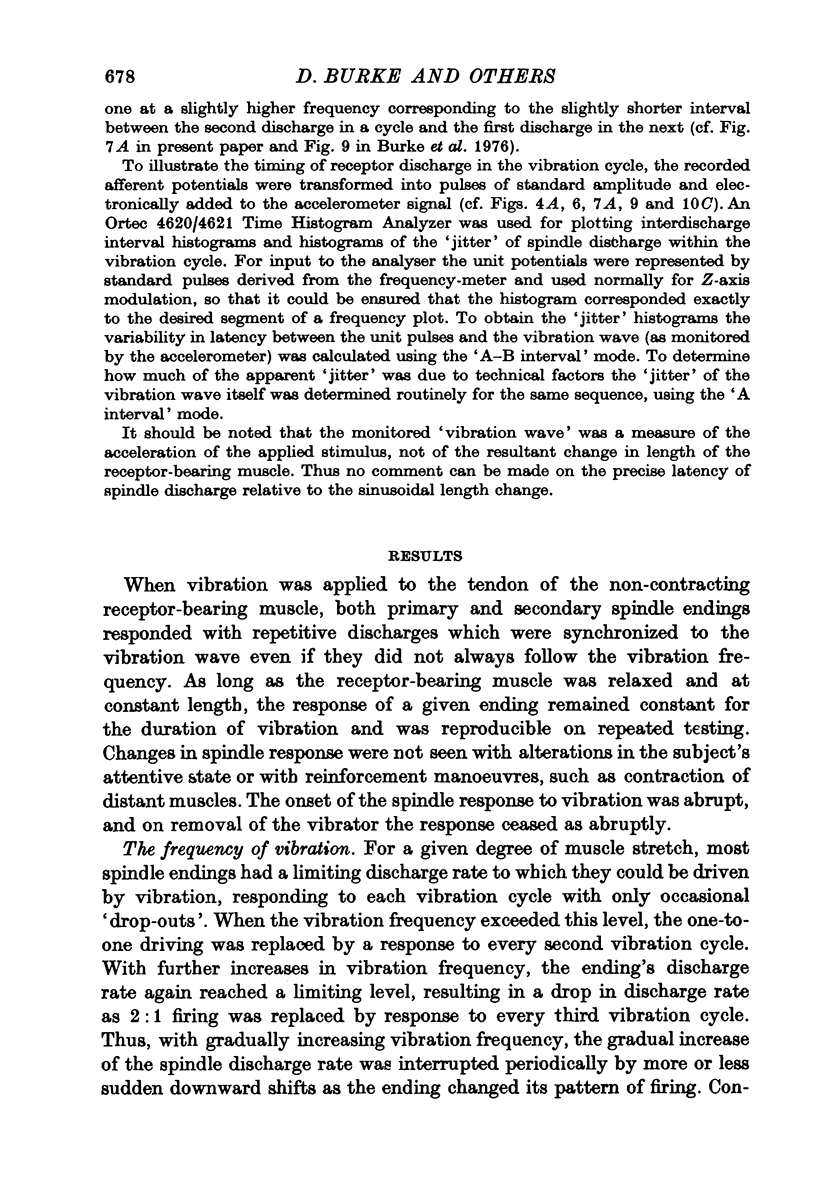
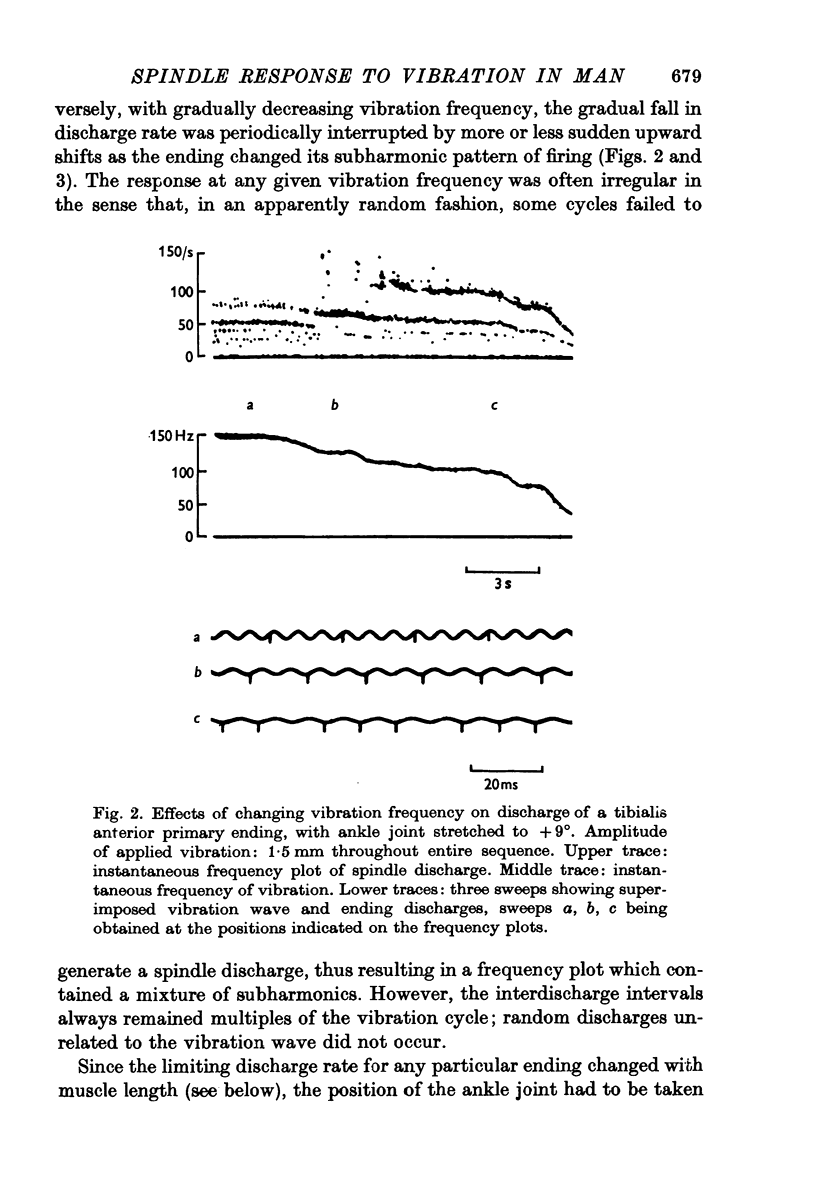
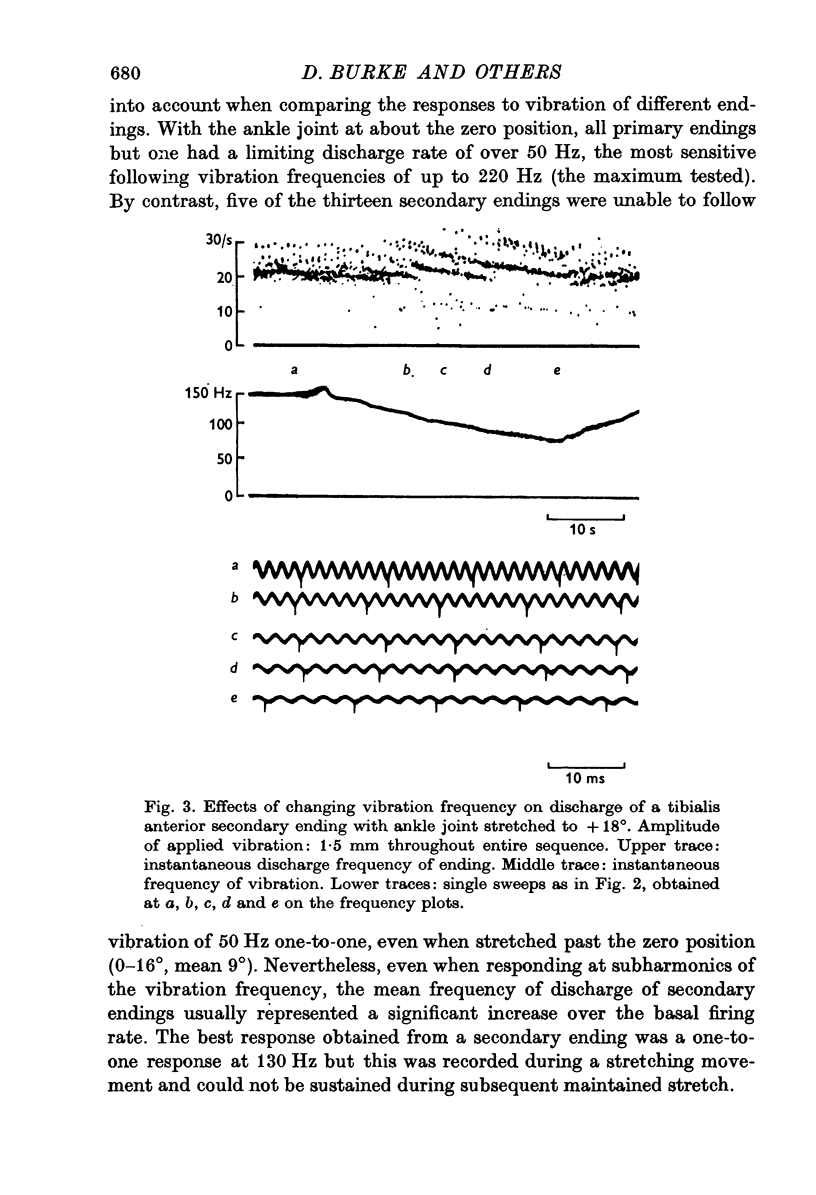
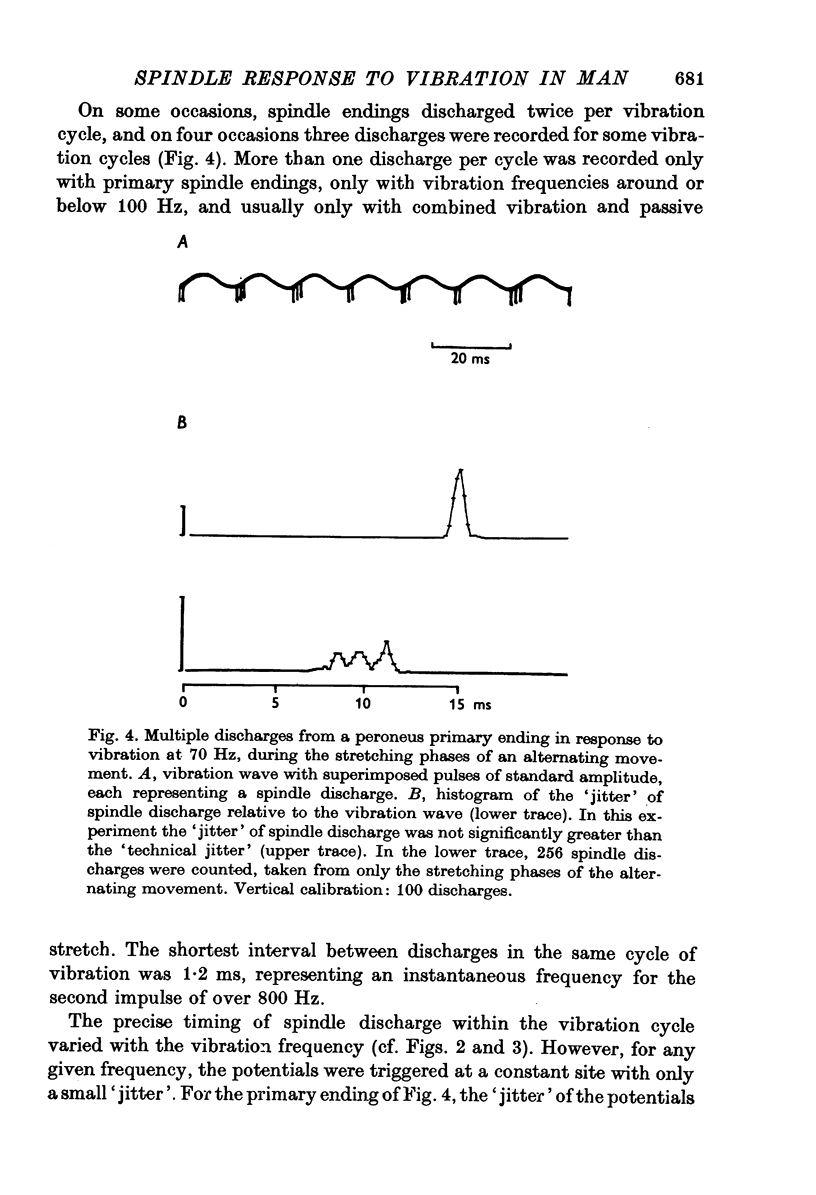
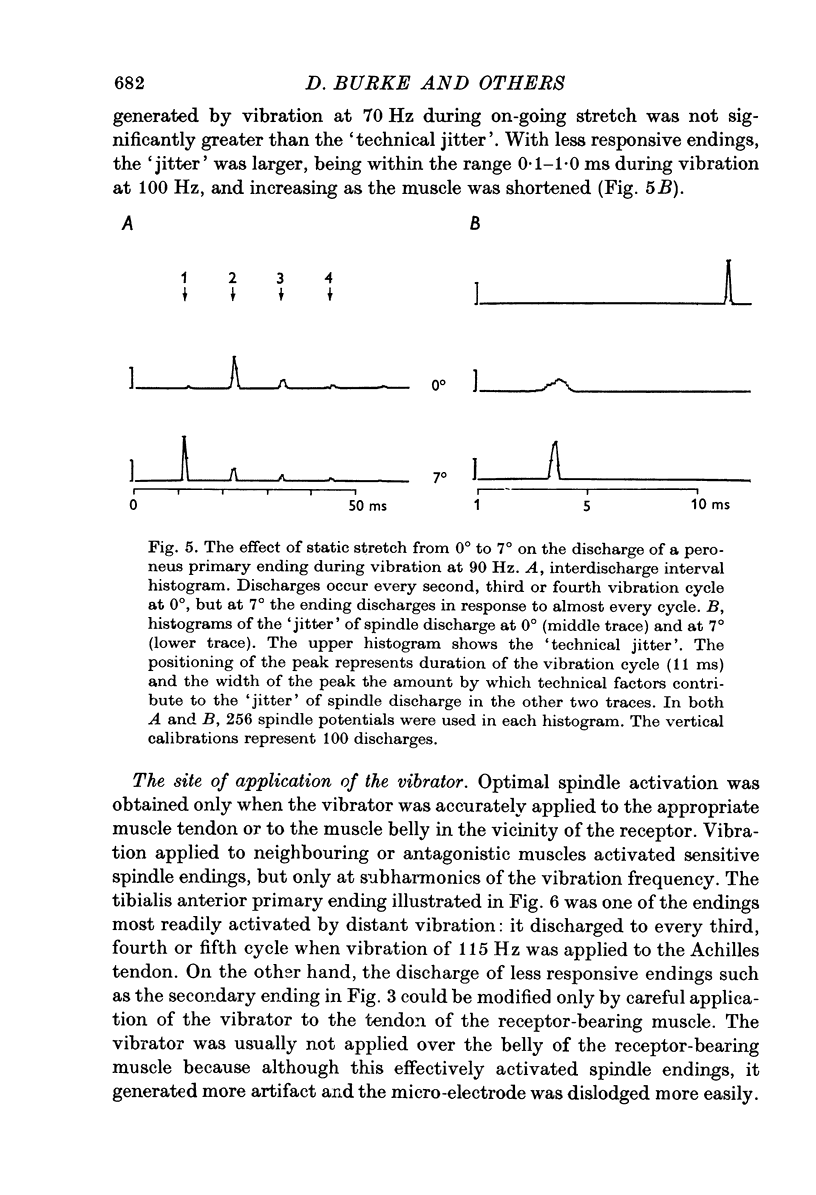
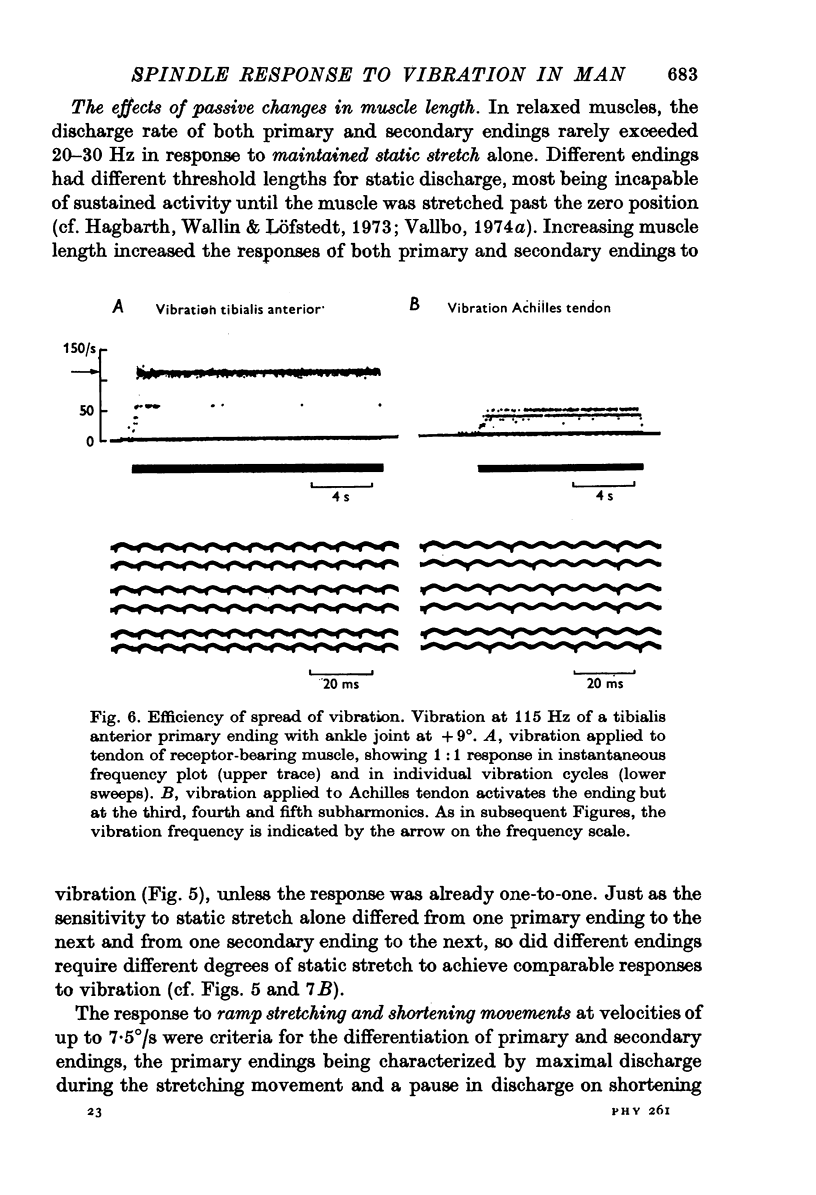
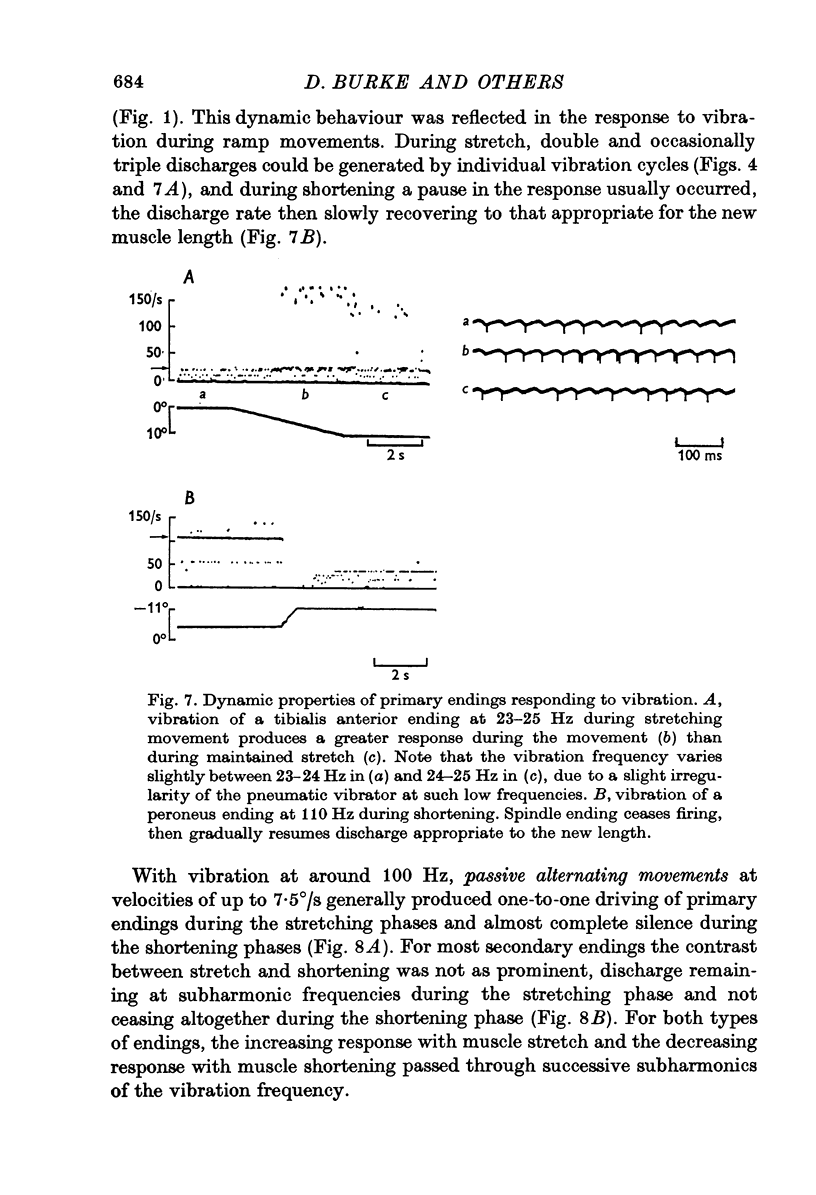
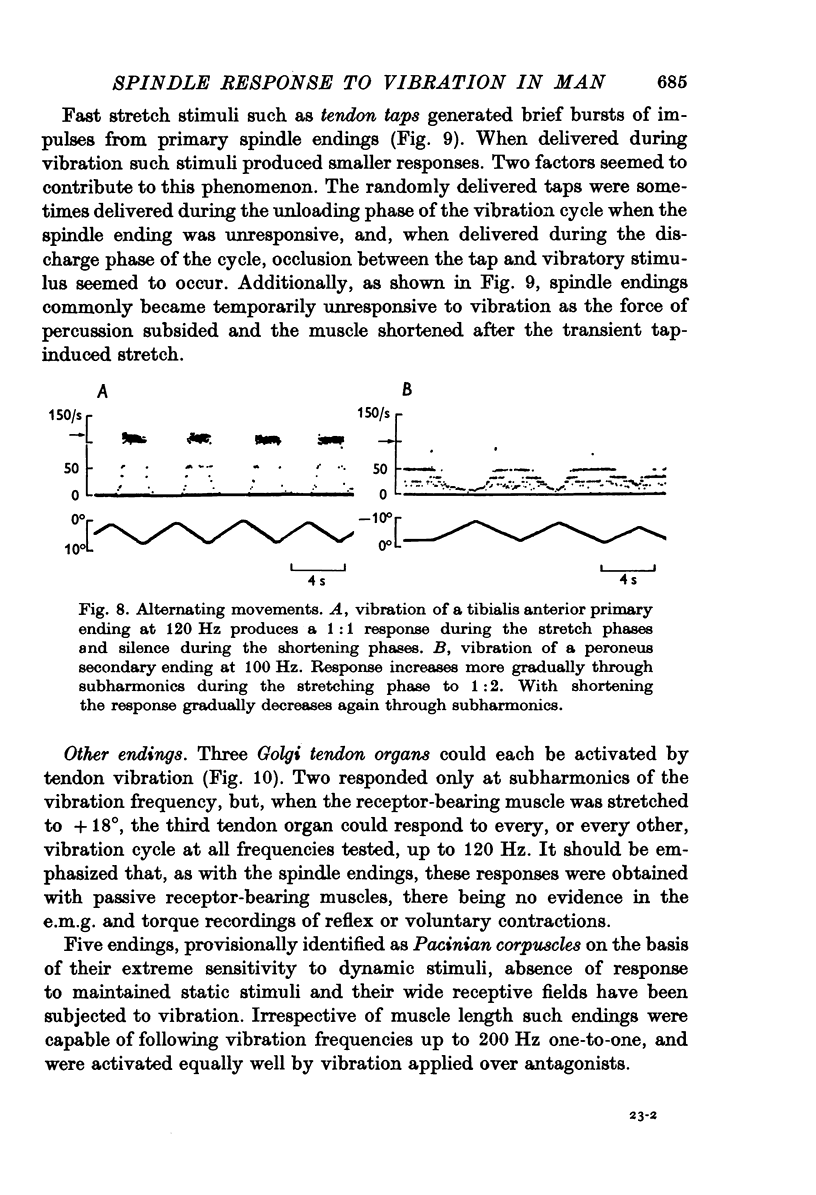
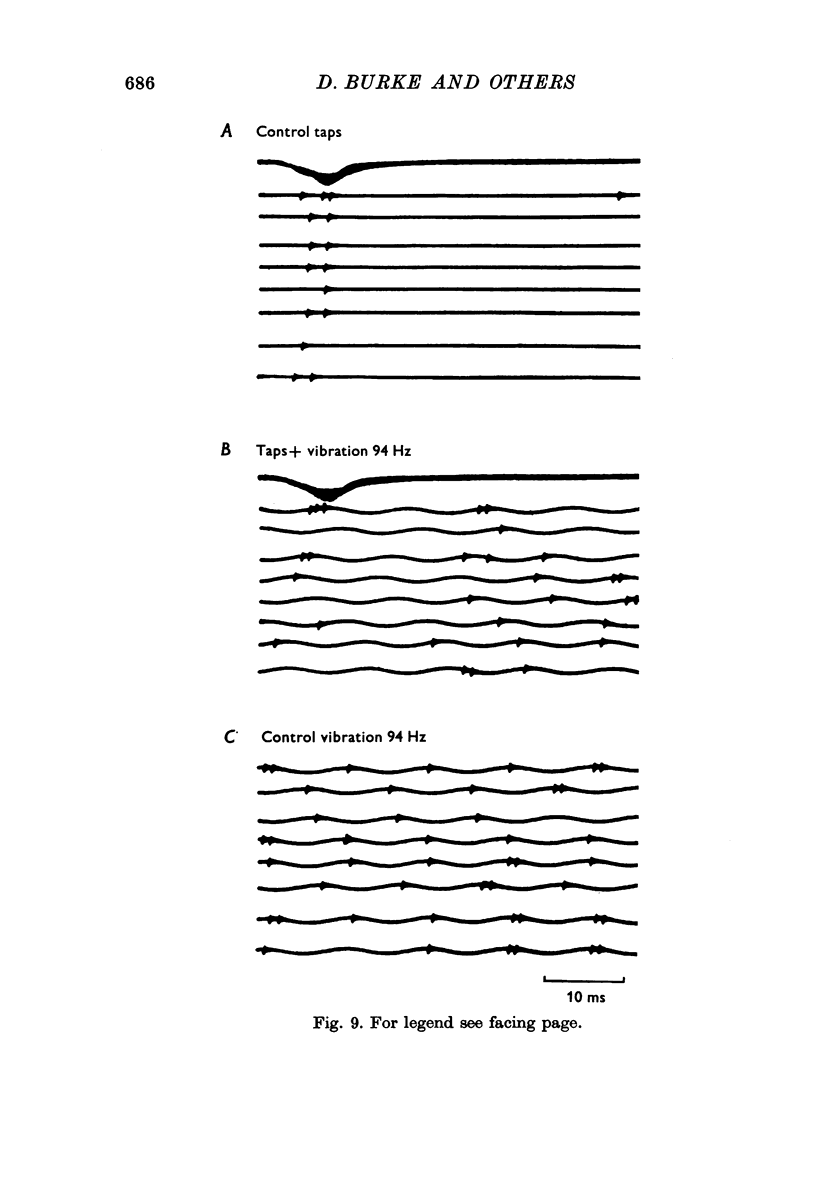
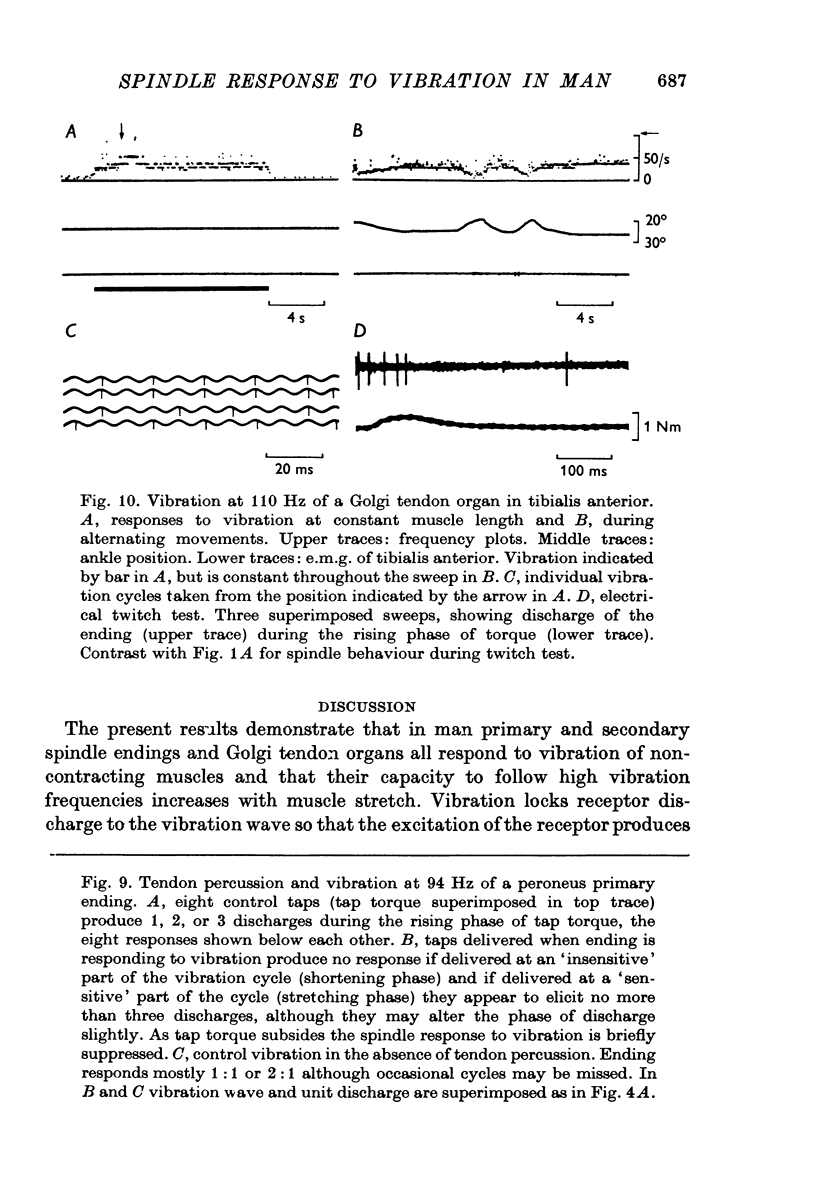
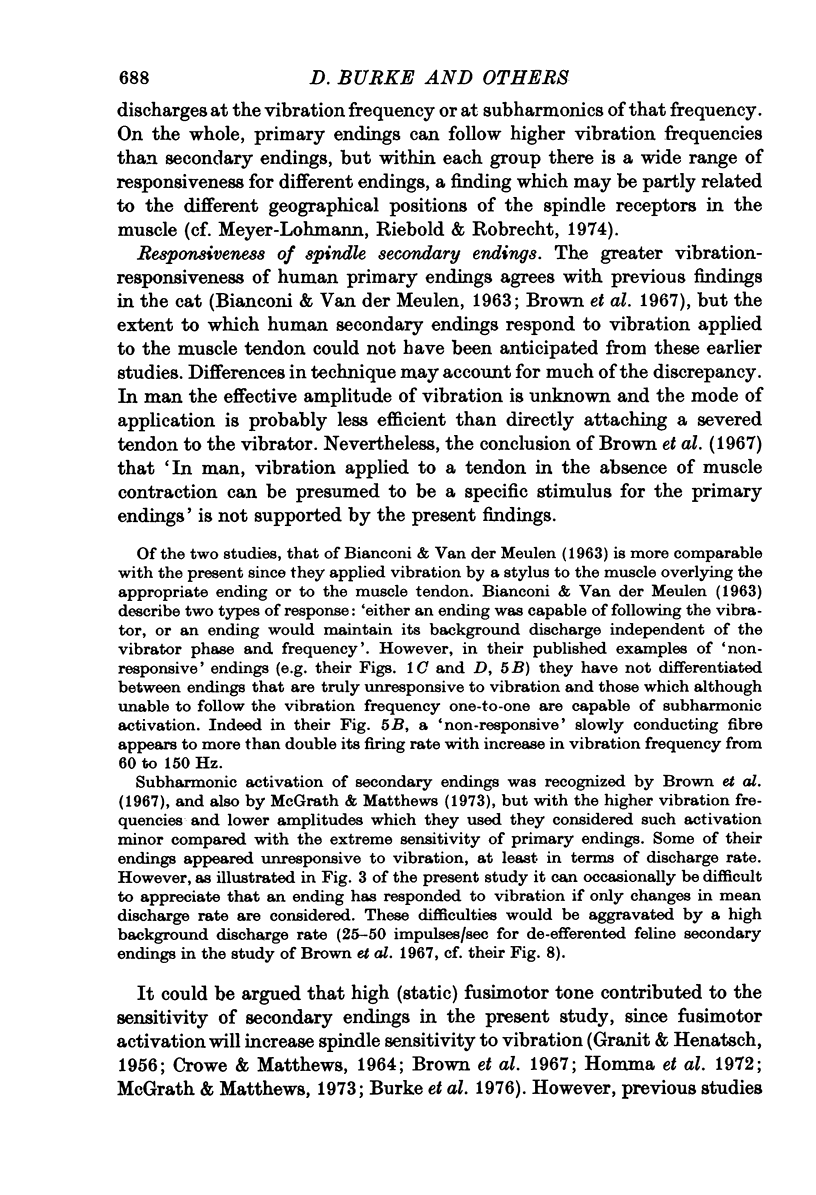

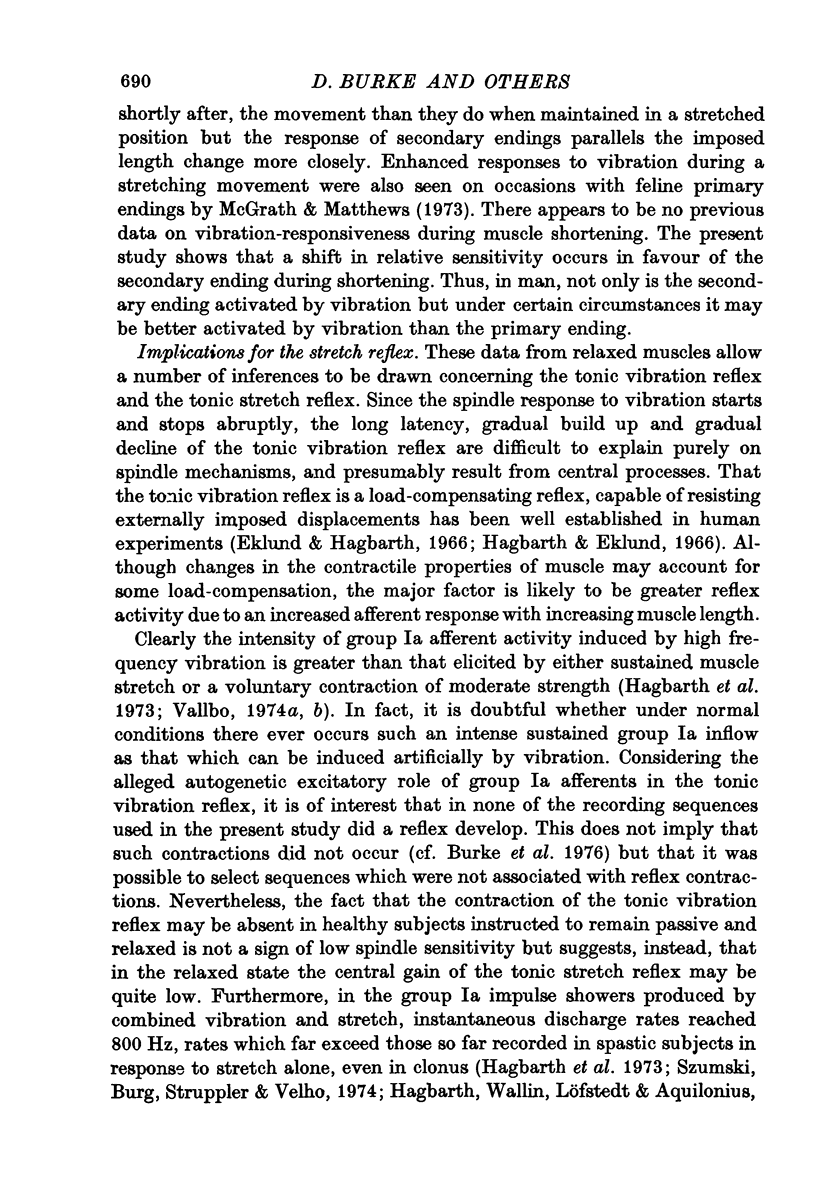
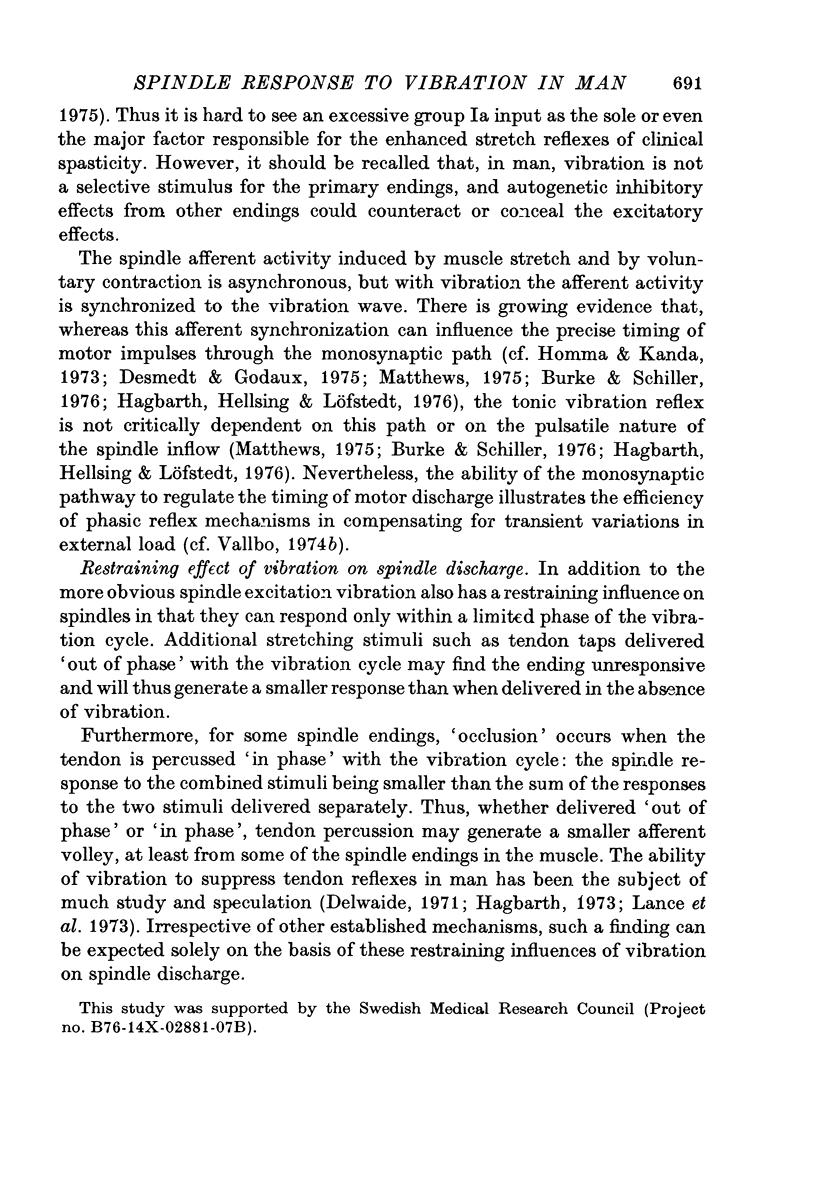
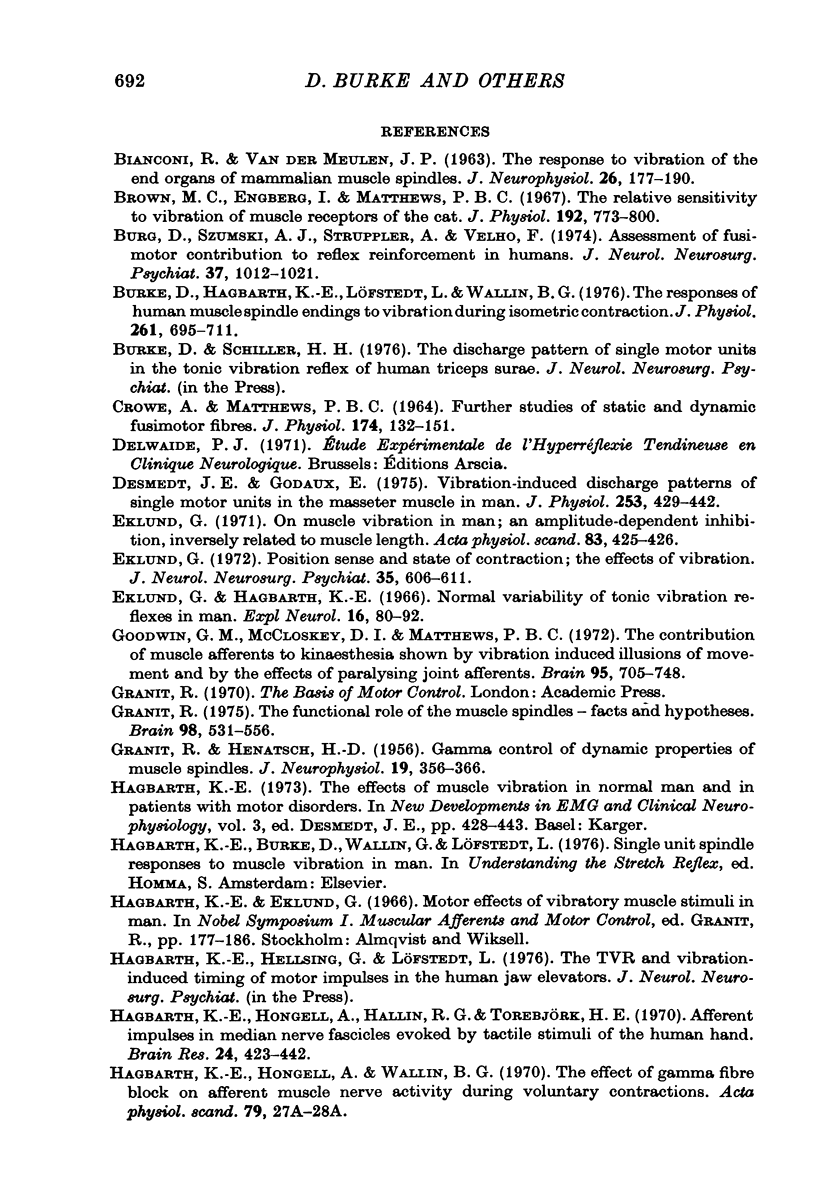
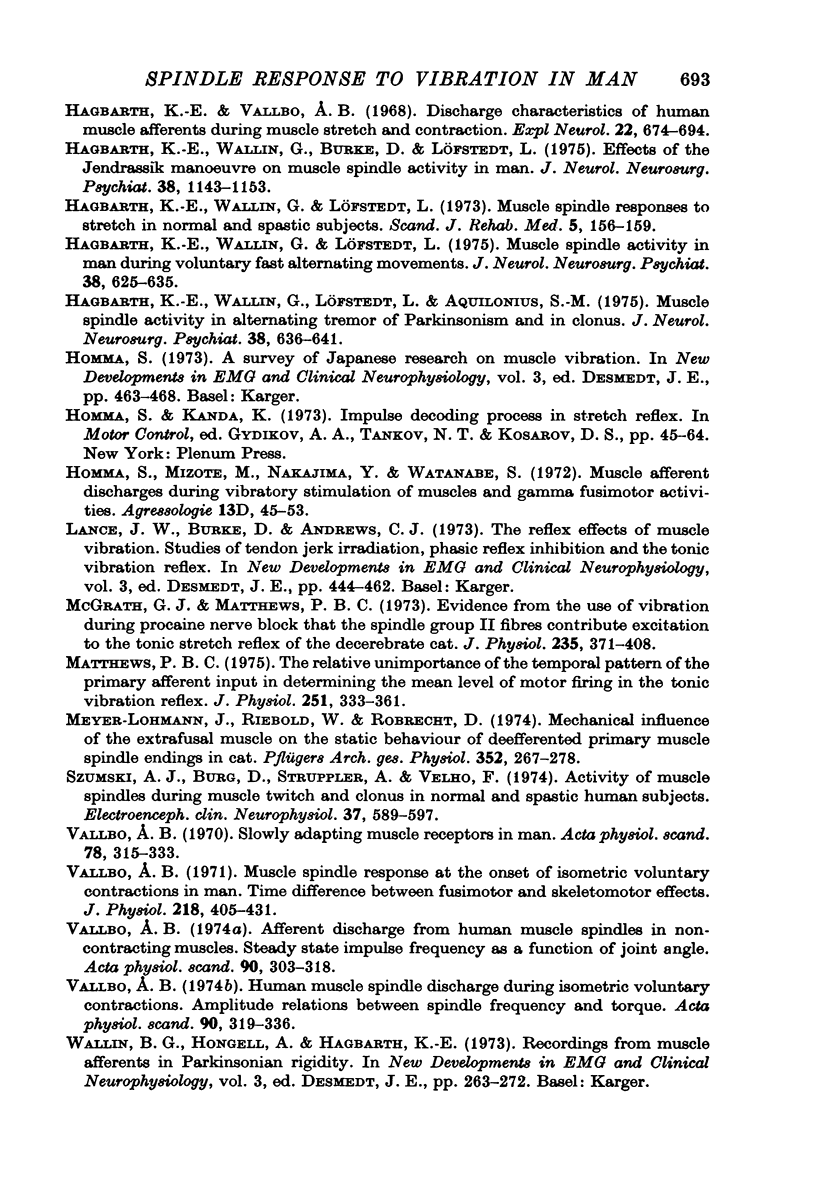
Selected References
These references are in PubMed. This may not be the complete list of references from this article.
- BIANCONI R., van der MEULEN J. The response to vibration of the end organs of mammalian muscle spindles. J Neurophysiol. 1963 Jan;26:177–190. doi: 10.1152/jn.1963.26.1.177. [DOI] [PubMed] [Google Scholar]
- Brown M. C., Engberg I., Matthews P. B. The relative sensitivity to vibration of muscle receptors of the cat. J Physiol. 1967 Oct;192(3):773–800. doi: 10.1113/jphysiol.1967.sp008330. [DOI] [PMC free article] [PubMed] [Google Scholar]
- Burke D., Hagbarth K. E., Löfstedt L., Wallin B. G. The responses of human muscle spindle endings to vibration during isometric contraction. J Physiol. 1976 Oct;261(3):695–711. doi: 10.1113/jphysiol.1976.sp011581. [DOI] [PMC free article] [PubMed] [Google Scholar]
- CROWE A., MATTHEWS P. B. FURTHER STUDIES OF STATIC AND DYNAMIC FUSIMOTOR FIBRES. J Physiol. 1964 Oct;174:132–151. doi: 10.1113/jphysiol.1964.sp007477. [DOI] [PMC free article] [PubMed] [Google Scholar]
- Desmedt J. E., Godaux E. Vibration-induced discharge patterns of single motor units in the masseter muscle in man. J Physiol. 1975 Dec;253(2):429–442. doi: 10.1113/jphysiol.1975.sp011198. [DOI] [PMC free article] [PubMed] [Google Scholar]
- Eklund G., Hagbarth K. E. Normal variability of tonic vibration reflexes in man. Exp Neurol. 1966 Sep;16(1):80–92. doi: 10.1016/0014-4886(66)90088-4. [DOI] [PubMed] [Google Scholar]
- Eklund G. On muscle vibration in man; an amplitude-dependent inhibition, inversely related to muscle length. Acta Physiol Scand. 1971 Nov;83(3):425–426. doi: 10.1111/j.1748-1716.1971.tb05097.x. [DOI] [PubMed] [Google Scholar]
- GRANIT R., HENATSCH H. D. Gamma control of dynamic properties of muscle spindles. J Neurophysiol. 1956 Jul;19(4):356–366. doi: 10.1152/jn.1956.19.4.356. [DOI] [PubMed] [Google Scholar]
- Goodwin G. M., McCloskey D. I., Matthews P. B. The contribution of muscle afferents to kinaesthesia shown by vibration induced illusions of movement and by the effects of paralysing joint afferents. Brain. 1972;95(4):705–748. doi: 10.1093/brain/95.4.705. [DOI] [PubMed] [Google Scholar]
- Granit R. The functional role of the muscle spindles--facts and hypotheses. Brain. 1975 Dec;98(4):531–556. doi: 10.1093/brain/98.4.531. [DOI] [PubMed] [Google Scholar]
- Hagbarth K. E., Hongell A., Hallin R. G., Torebjörk H. E. Afferent impulses in median nerve fascicles evoked by tactile stimuli of the human hand. Brain Res. 1970 Dec 18;24(3):423–442. doi: 10.1016/0006-8993(70)90183-6. [DOI] [PubMed] [Google Scholar]
- Hagbarth K. E., Hongell A., Wallin B. G. The effect of gamma fibre block on afferent muscle nerve activity during voluntary contractions. Acta Physiol Scand. 1970 Jun;79(2):27A–28A. [PubMed] [Google Scholar]
- Hagbarth K. E., Vallbo A. B. Discharge characteristics of human muscle afferents during muscle stretch and contraction. Exp Neurol. 1968 Dec;22(4):674–694. doi: 10.1016/0014-4886(68)90156-8. [DOI] [PubMed] [Google Scholar]
- Hagbarth K. E., Wallen G., Löfstedt L. Muscle spindle activity in man during voluntary fast alternating movements. J Neurol Neurosurg Psychiatry. 1975 Jul;38(7):625–635. doi: 10.1136/jnnp.38.7.625. [DOI] [PMC free article] [PubMed] [Google Scholar]
- Hagbarth K. E., Wallin G., Burke D., Löfstedt L. Effects of the Jendrassik manoeuvre on muscle spindle activity in man. J Neurol Neurosurg Psychiatry. 1975 Dec;38(12):1143–1153. doi: 10.1136/jnnp.38.12.1143. [DOI] [PMC free article] [PubMed] [Google Scholar]
- Hagbarth K. E., Wallin G., Löfstedt L., Aquilonius S. M. Muscle spindle activity in alternating tremor of Parkinsonism and in clonus. J Neurol Neurosurg Psychiatry. 1975 Jul;38(7):636–641. doi: 10.1136/jnnp.38.7.636. [DOI] [PMC free article] [PubMed] [Google Scholar]
- Hagbarth K. E., Wallin G., Löfstedt L. Muscle spindle responses to stretch in normal and spastic subjects. Scand J Rehabil Med. 1973;5(4):156–159. [PubMed] [Google Scholar]
- Matthews P. B. The relative unimportance of the temporal pattern of the primary afferent input in determining the mean level of motor firing in the tonic vibration reflex. J Physiol. 1975 Oct;251(2):333–361. doi: 10.1113/jphysiol.1975.sp011096. [DOI] [PMC free article] [PubMed] [Google Scholar]
- McGrath G. J., Matthews P. B. Evidence from the use of vibration during procaine nerve block that the spindle group II fibres contribute excitation to the tonic stretch reflex of the decerebrate cat. J Physiol. 1973 Dec;235(2):371–408. doi: 10.1113/jphysiol.1973.sp010392. [DOI] [PMC free article] [PubMed] [Google Scholar]
- Meyer-Lohmann J., Riebold W., Robrecht D. Mechanical influence of the extrafusal muscle on the static behaviour of deefferented primary muscle spindle endings in cat. Pflugers Arch. 1974;352(3):267–278. doi: 10.1007/BF00590491. [DOI] [PubMed] [Google Scholar]
- Szumski A. J., Burg D., Struppler A., Velho F. Activity of muscle spindles during muscle twitch and clonus in normal and spastic human subjects. Electroencephalogr Clin Neurophysiol. 1974 Dec;37(6):589–597. doi: 10.1016/0013-4694(74)90072-8. [DOI] [PubMed] [Google Scholar]
- Vallbo A. B. Human muscle spindle discharge during isometric voluntary contractions. Amplitude relations between spindle frequency and torque. Acta Physiol Scand. 1974 Feb;90(2):319–336. doi: 10.1111/j.1748-1716.1974.tb05594.x. [DOI] [PubMed] [Google Scholar]


